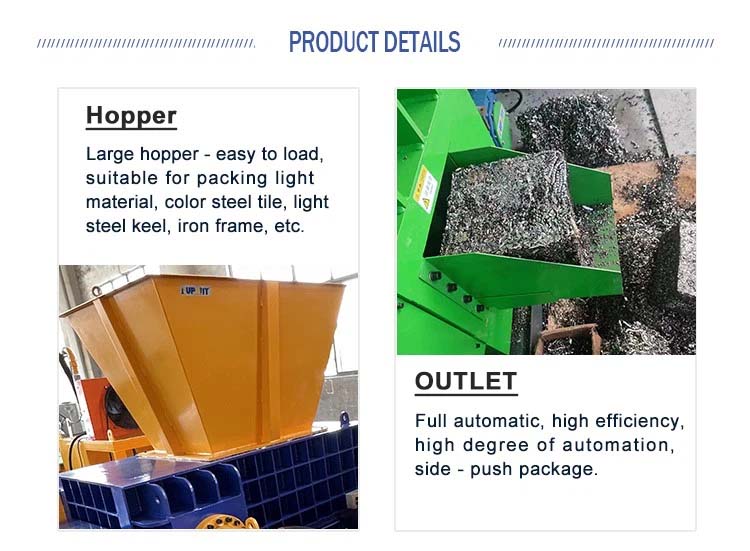Steel-belted tires pose safety risks during baling, as high-pressure compression can cause broken wires to snap or eject violently. Here are key methods to minimize hazards and ensure safe operation:
1. Pre-Processing Tires
-
Cut/Shred Tires First: Use a tire shear or shredder to slice tires into segments (2-4 pieces) before baling. This reduces wire tension and prevents rebound.
-
Remove Bead Wires: For extreme cases, manually extract the stiff bead wires from tire rims using bead wire pullers.
2. Adjust Baling Parameters
-
Gradual Compression: Use multi-stage compression cycles to allow wires to settle slowly, rather than single high-pressure bursts.
-
Limit Pressure: Avoid exceeding the baler’s rated pressure for steel-belted tires (typically 10–15% lower than all-rubber tires).
3. Equipment Modifications
-
Reinforced Containment: Install wire mesh guards or polycarbonate shields around the baling chamber to block ejected debris.
-
Anti-Rebound Systems: Some balers feature hydraulic "hold-down" arms to keep bales compact after compression, reducing wire springback.
4. Operational Best Practices
-
Wear PPE: Operators must use cut-resistant gloves, face shields, and chainmail aprons.
-
Inspect Tires: Remove nails, debris, or severely corroded wires before loading.
-
Monitor for Wear: Check baler blades and hydraulic seals regularly—dull blades increase wire snapping risks.
5. Post-Baling Handling
-
Secure Bales with Straps: Bind finished bales with steel or polyester straps to prevent wire protrusion during transport.
-
Store Flat: Stack bales horizontally to minimize wire displacement over time.








